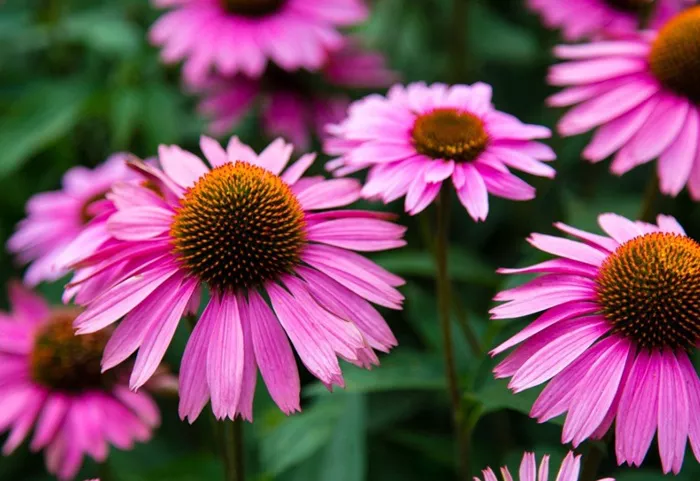Coneflower leaves are a fascinating aspect of these beautiful plants. Often overlooked in favor of their vibrant blooms, the leaves play a crucial role in the plant’s health and appearance. Understanding their characteristics can enhance your gardening experience and help you better care for these delightful additions to your garden.
The Structure and Appearance of Coneflower Leaves
Coneflower leaves are an essential part of the plant’s anatomy. They are typically lance-shaped or ovate, with a length ranging from 2 to 6 inches. The edges of the leaves are serrated, giving them a slightly jagged appearance. This serration is not just for show; it helps the plant with water retention and light absorption. The leaves are arranged alternately along the stem, creating a visually appealing pattern that adds to the plant’s overall aesthetic.
Leaf Texture and Color
The texture of coneflower leaves is an important aspect to consider. They are generally rough to the touch, with a slightly leathery feel. This texture helps the leaves withstand various weather conditions and resist damage from pests. The color of the leaves can vary depending on the specific variety of coneflower. Most commonly, they are a rich green, but some cultivars may have leaves with a bluish-green hue. In the fall, the leaves may turn yellow or bronze, adding to the seasonal beauty of the plant.
Size and Shape Variations
While the typical coneflower leaf is lance-shaped, there can be variations in size and shape. Some varieties may have narrower leaves, while others may have broader ones. The size of the leaves can also differ, with some plants having larger leaves that provide more shade to the base of the plant. These variations are part of what makes coneflowers such a diverse and interesting group of plants.
The Role of Coneflower Leaves in Plant Health
Coneflower leaves are not just decorative; they play a vital role in the plant’s health and growth. As with all plants, the leaves are responsible for photosynthesis, the process by which the plant converts sunlight into energy. The serrated edges and large surface area of the leaves maximize the amount of sunlight that can be captured, ensuring the plant has enough energy to grow and produce its stunning flowers.
Pest and Disease Resistance
The rough texture of coneflower leaves also serves as a natural defense mechanism against pests and diseases. Many insects find the texture unappealing and are less likely to feed on the leaves. Additionally, the leaves’ structure helps to shed water quickly, reducing the risk of fungal infections that can occur in damp conditions. This natural resistance makes coneflowers relatively low-maintenance plants, perfect for gardeners who want to enjoy beautiful blooms without constant worry.
Water Retention and Nutrient Absorption
The leaves of coneflowers are also adapted to help with water retention. Their thick, leathery texture allows them to store water, which is particularly useful during dry spells. This ability to retain water means that coneflowers can survive in a variety of climates and soil conditions, making them a versatile addition to any garden. The leaves also play a role in nutrient absorption, working in conjunction with the roots to ensure the plant receives the necessary nutrients for healthy growth.
Caring for Coneflower Leaves
To keep your coneflowers healthy and thriving, it’s important to pay attention to their leaves. Regularly inspecting the leaves for signs of pests or disease can help you catch any issues early. If you notice any yellowing or browning of the leaves, it may be a sign of overwatering or a nutrient deficiency. Adjusting your watering schedule or adding a balanced fertilizer can help address these issues.
Pruning and Maintenance
Pruning is another important aspect of caring for coneflower leaves. Removing any dead or damaged leaves can help improve air circulation and reduce the risk of disease. It also encourages new growth, resulting in a fuller, more attractive plant. Be sure to use clean, sharp tools when pruning to avoid damaging the plant.
Watering and Soil Conditions
Coneflowers are relatively drought-tolerant, but they still need consistent watering, especially during their first year of growth. Water deeply but infrequently to encourage strong root development. Well-draining soil is essential to prevent waterlogged roots, which can lead to root rot and other issues. Adding a layer of mulch around the base of the plant can help retain moisture and regulate soil temperature.
Conclusion
Coneflower leaves are more than just a backdrop to the plant’s beautiful blooms. They are a vital part of the plant’s anatomy, playing a crucial role in its health and growth. Understanding their structure, appearance, and function can help you better care for your coneflowers and enjoy their beauty for years to come. So, the next time you admire a coneflower, take a moment to appreciate the leaves as well—they are truly the unsung heroes of this delightful plant.


